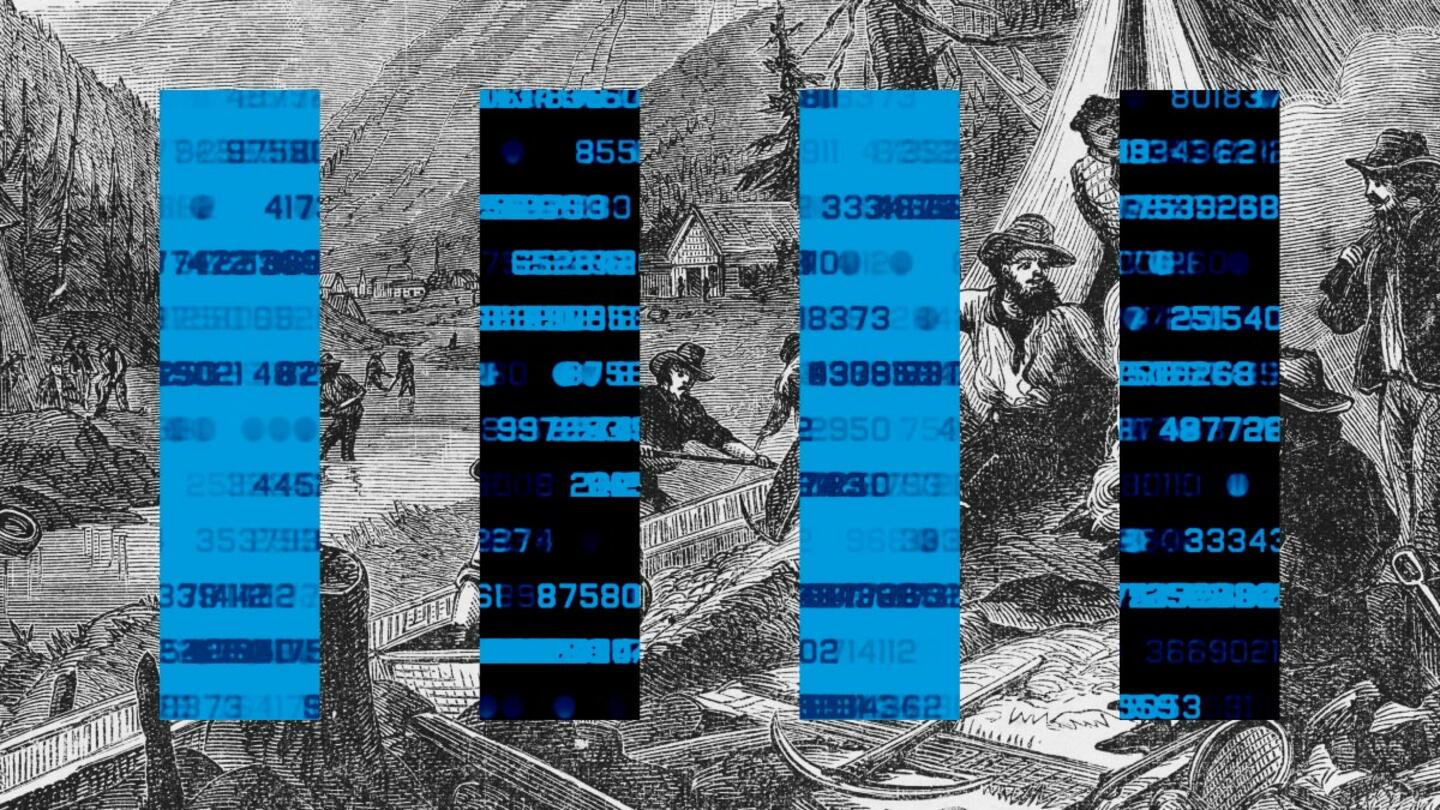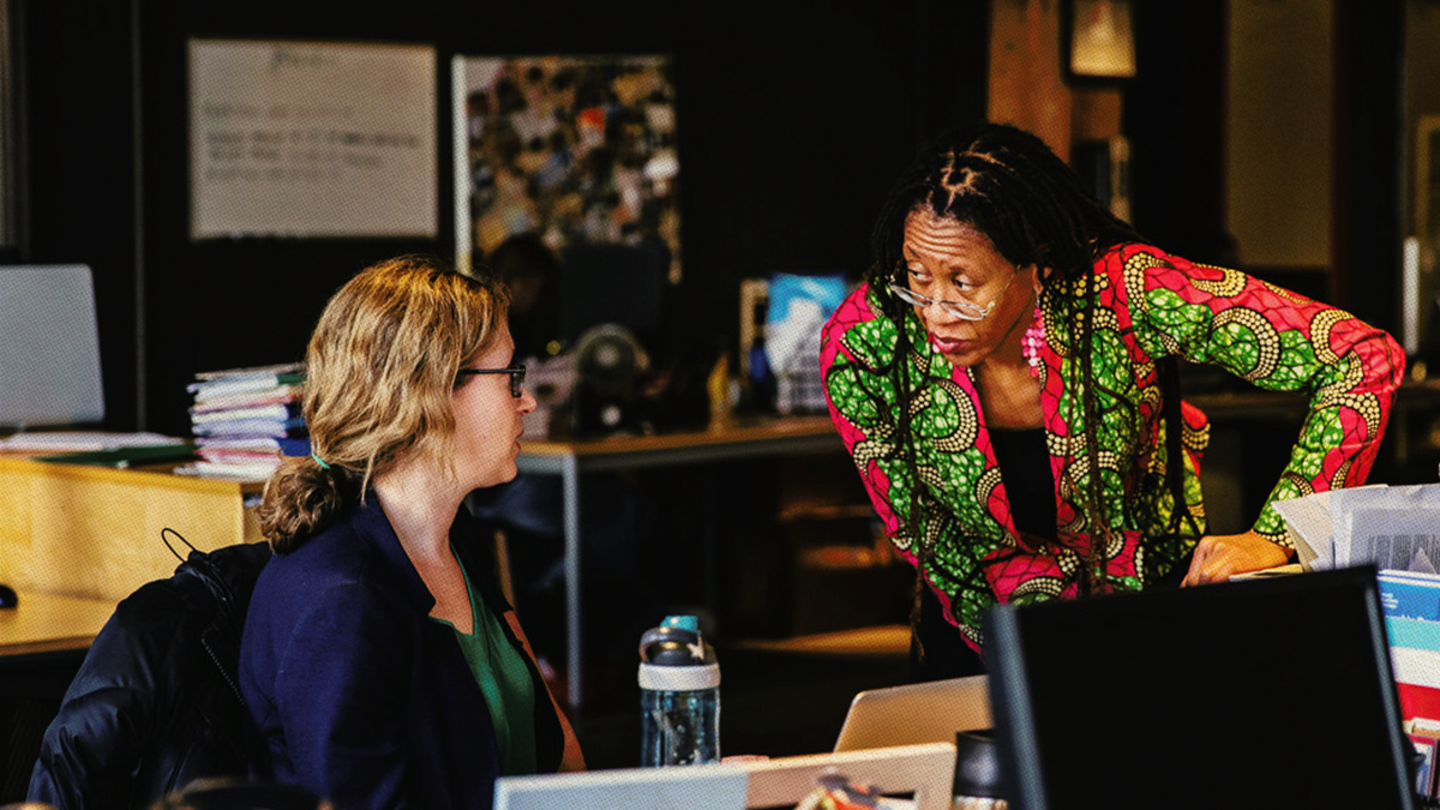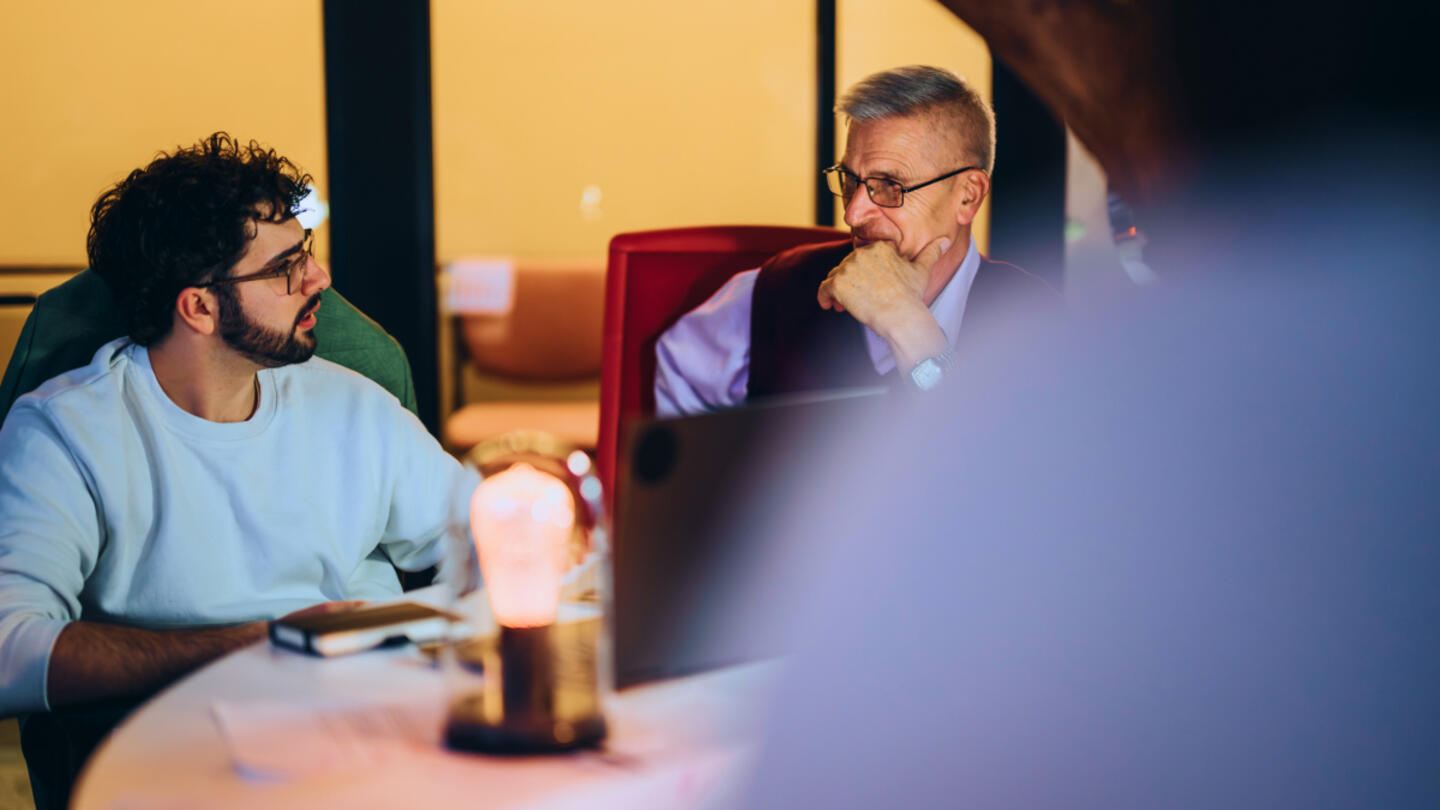For the first time in decades, five generations are currently active in the workforce. It’s easy to assume that could cause conflict, but for many in leadership, it’s actually an opportunity. How are leaders best positioned to harness it?
“Generationally, there’s this unique timing,” said Andy Tonsing, Stand Together’s vice president of future of work.
There are many reasons our current workforce looks very different than it did just a few decades ago — including the rise of flexible working arrangements, learning on the job, and many different educational pathways beyond the four-year degree. Regardless of why, the end result is this: The Silent Generation (2.0% of workers), baby boomers (18.6%), Generation X (34.8%), millennials (38.6%), and Generation Z (6.1%) are all working together right now in any given work environment.
These five groups have differing educational backgrounds, professional and life experiences, and working styles. For some employers, building a workplace that caters to everyone can feel like an overwhelming task. But what if it were an opportunity instead?
Each generation brings a different perspective. Their unique backgrounds can complement each other and strengthen an organization’s mission.
Here, Tonsing lays out how employers can meet their employees where they are and leverage their individual strengths, creating a workforce that benefits workers and their employees.
A new definition of ‘work’
With so many generations working together, employers and job seekers are rethinking the very purpose of work.
Rather than just a 9-5 way to get a paycheck, many view their jobs as part of their identity. People seek meaning, purpose, and fulfillment from their careers. After all, the average American spends one-third of their life at work.
“There used to be a mindset that viewed work in a more utilitarian way,” Tonsing said. “It was something a person mainly did to pay for the things in their life that really mattered.”
However, the way that Americans view work has started to shift.
“The workplace has become more dynamic,” Tonsing said. “The lifelong, ‘gold watch at retirement’ job is gone. Part of that is because companies are more dynamic themselves. They’re engaged in creative destruction at a much faster pace than before. Additionally, people view work as a part of their identity now more than they used to. They’re looking for work they find meaningful.”
Five generations together at work can mean five different sets of working styles and expectations. This can be intimidating for many organizational leaders and members of all generations — won’t they clash?
“The expectations are just massively different among the five,” Tonsing said. “It’s pretty unique. We’ve never had to navigate this sort of cultural difference before.”
Tonsing noted as an example that Gen Z and millennials increasingly care that their workplace addresses mental health, while baby boomers and older generations have a more compartmentalized view of work and personal life. Younger generations are less motivated by the amount of money they make than their older counterparts and prioritize employers who demonstrate strong values and invest in employee development.
“Not all employers are used to catering to that,” Tonsing said. “They’re not used to considering why you should work here or how to design work to meet their employees’ needs.”
It is precisely that intentional reflection that can make the difference between a workforce that tolerates such a diversity of working styles and one that takes advantage of it. Here’s how.
Sign up for Stand Together's Rethinking Work & Learning newsletter to get the latest stories, ideas, and trends on the future of employment.
How to create a multigenerational workforce
Despite the differences, with the right mindset and resources, a manager can view these five generations working together as an opportunity and source of strength — not an obstacle. Tonsing recommended that managers “lean into this with an asset mentality. What do your employees bring that is an asset that might be different from others? Talk about this with them.”
“Be open and creative,” he continued. “It’s uncomfortable [having so many different working styles in one office], but if you are open to that and can lean into it where it makes sense, in the future, you won’t be trying to fight against the tide and having it happen to you, rather than with you.”
For employers, it can be essential to create opportunities — whether through regular one-on-one communication or via scheduled check-ins with HR — for employees to express their preferences and perspectives. Employees should take the time to reflect on their individual goals and strengths in the workplace.
This also means recognizing that the unique backgrounds and experiences each age group brings can complement and strengthen each other.
Tonsing highlighted that younger generations can offer a vision of higher purpose and a strong motivation to innovate and take creative risks at work. They “bring their full selves to the office,” he said, noting that they are often willing to sacrifice wages for development opportunities. In that way, early-career workers can provide opportunities for employers to test out career development programs and allow workers to collaborate with other departments they’re interested in. Younger generations are also interested in new and expanding ways of working, such as AI and the gig economy.
Older generations, on the other hand, have long-term institutional knowledge that can be very valuable.
“These people have worked in your organization and your industry for decades,” Tonsing said. “They know what you’re about. Allow them to nurture upcoming talent. It’s a way to give back and use their institutional knowledge.”
To harness this knowledge, Tonsing encourages companies to establish formal mentorship programs and create meaningful cross-generational connections.
“Not just a happy hour,” he emphasized. “Build those mentorships for older generations to leave a legacy and impart knowledge and wisdom.”
Tonsing noted that ultimately, it’s not about an employer trying to find a perfect compromise between the generations — rather, it’s about choosing the working styles that work best for their company and making it a strong identity. That allows workers of all generations to consider their values and priorities and reflect on whether a company will be a good fit for them.
“Having a really strong cultural identity and clarity on organizational values and mission are important,” he said. “This is our workplace. This is who we are. This is what we’re about. Some places are going to be an in-person type of culture. Other places are going to make a value proposition around flexibility and remote work. People want to work at a place with a strong identity, and if it’s not a fit for them, that’s fine.”
Tonsing mentioned the Society for Human Resource Management, which offers many resources for employers looking to build employee value propositions and a strong culture.
Additionally, Tonsing noted that this identity can and should morph over time with feedback from workers. Employees should be empowered to voice their opinions, and employers should be open to listening to them to create a collaborative workplace that reflects both sides’ strengths, needs, and goals. However, his shift only happens when employers genuinely foster opportunities for feedback that go beyond lip service and employees take the time to reflect and share their insights intentionally rather than remaining silent.
“Worker voice is really important,” Tonsing said. “Workers can express their opinions about things. They can make recommendations on ways to improve and innovate. They can, if they see issues with the workplace, raise them in a safe way — in a way that’s genuinely listened to. Look for the places where you value authentic worker voice and input and where there are openings, and then actually build mechanisms for it. And then put your money where your mouth is. Be ready to respond to it and have a dialogue.”
Employees feel heard and supported when this happens, resulting in more drive, dedication, and productivity. That provides a slew of benefits for employers and companies’ bottom lines.
“The employees you have will be a better fit,” Tonsing said. “They’re going to be more loyal; they’re going to be more productive. If you give them these opportunities and be flexible, you’re going to attract people you might not get otherwise.”
The same is true for employees who have been with an organization for many years. Each generation has valuable perspectives, experiences, and strengths to offer — if their company fosters a culture that can recognize and uplift this diversity. It’s a way to build a durable and inclusive workforce.
“Everybody has something to contribute,” Tonsing said. “Every generation has different experiences, different values, different ways of learning, of working. Leaning into the strengths requires a lot of listening, openness, learning, and experimentation. That might make leaders uncomfortable, but I think that sort of discomfort opens up the workplace of the future.”
The Charles Koch Foundation, as part of the Stand Together community, funds cutting-edge research and helps expand postsecondary educational options.
Learn more about Stand Together’s efforts to transform the future of work and explore ways you can partner with us.

Why AI may help more people achieve the American Dream.

Data centers are at the forefront of the ‘new economy.’ But what exactly are they?

Here’s how to bridge the disconnect between employers and employees.

Lessons learned from Colorado.
